First Class Bhangra members took off their shoes and helped tie each other’s colorful costumes firmly in place as they prepared for their critique night in Posvar Hall.
Wednesday, dance team First Class Bhangra performed in front of peers in preparation for Saturday’s Buckeye Mela at Ohio State University — a 16-team competition that Pitt’s Bhangra cohort won in 2015. In hopes that the audience would bring honest critiques and fresh eyes, First Class Bhangra’s 20 members hosted a casual performance 10:30 p.m. in Posvar Hall.
A dance style that originated in the Punjab region of northern South Asia, Bhangra mixes modern and traditional moves, making for high-energy routines with a lot of jumping and pounding feet on the ground.
First Class Bhangra, founded in 2009 as an independent Bhangra team for male high school and college students, is a versatile group consisting of high school, undergraduate and graduate students from schools around the city.
At Wednesday’s critique night, First Class Bhangra’s 19 male members and one female member shouted and smiled through the mock competition, wearing embroidered kurtas, vests, chadars and pags — colorful silk shirts, ornate loincloths and hand-tied head dresses.
“Critique night is basically where we showcase our performance and get feedback from almost every single team on campus,” sophomore dancer Umer Qureshi said. “It’s really a support network.”

With only three days left to practice, the men filled the hallway of Posvar Hall’s main floor with lots of friends and boisterous music. They asked the audience for honest feedback and videotaped their performance in search of final critiques before Saturday’s competition.
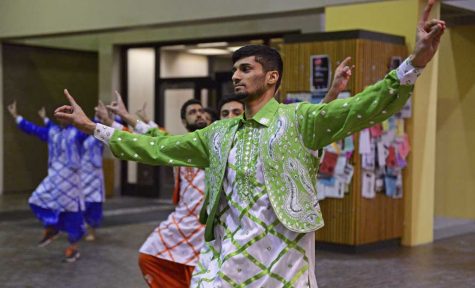
Chandra Rathnam, the graduate student pictured above, danced Bhangra as an undergraduate at Cornell University, where he idolized First Class Bhangra’s competitive edge from afar. When he started graduate school at Pitt, he knew he needed to prove himself to the impressive team.
“First Class Bhangra is all boys whereas Cornell’s team had six girls and six boys,” Rathnam said. “There’s more power in this set, more energy.”
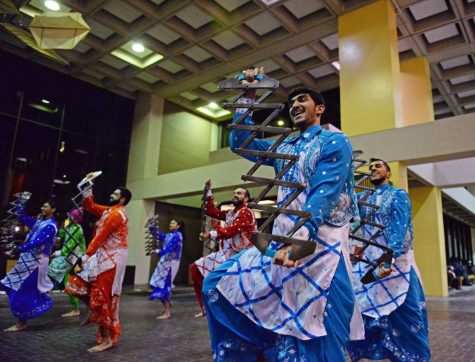
Dancers with saaps, a wooden Bhangra prop that men and women fold and extend, making loud noises to match the stomping of their feet. The audience erupted in cheers as the First Class Bhangra team snapped their saaps, showing the team they were thoroughly engaged.
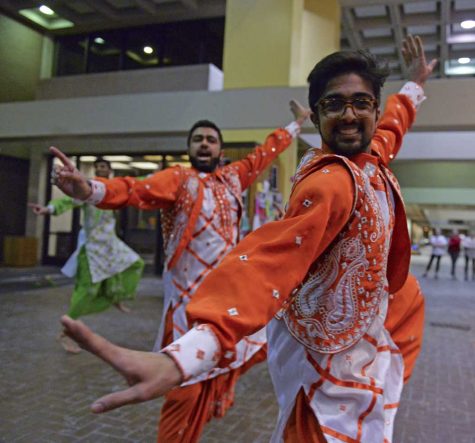
Qureshi, the biology and art history major pictured above, said critique night allows the team a chance to dance among friends rather than deal with the pressure of performing in front of judges.
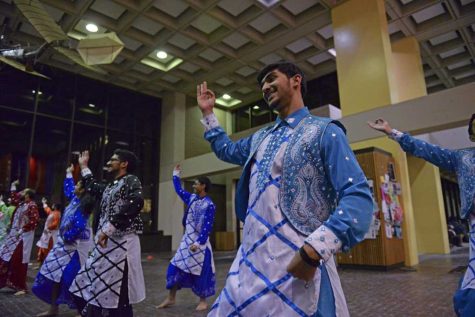
Each Bhangra routine consists of 12 to 16 dancers, as pictured, all of whom must pay close attention to their own movements as well as their teammates in order to win.
“With Bhangra you want to be uniform, to be perfect, one team rather than individual dancers,” Rathnam said.
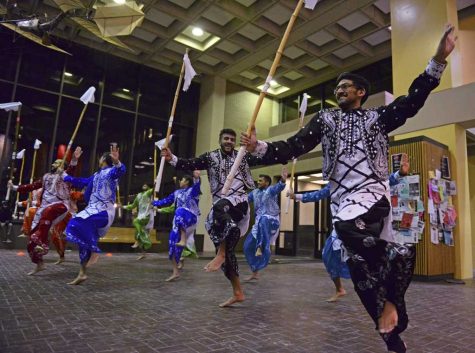
Using five-foot sticks called khundas, pictured above, the team performed to a nine-minute mash-up of traditional South Asian music and one famous American song — “Black and Yellow” by Wiz Khalifa.

With the nine-minute mark fast approaching, the dancers lined up toward the front of the stage, giving the impression that the performance was over. When “Black and Yellow” erupted out of the speakers unexpectedly, the crowd exploded with one last burst of enthusiastic cheers as the dancers jumped to the beat of the song.
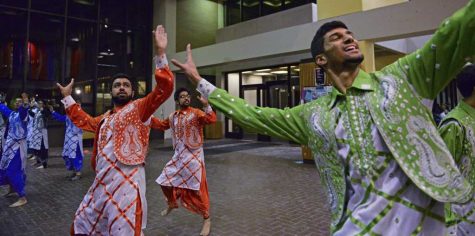
After the performance, the audience surrounded the sweating and panting dancers and discussed last-minute adjustments to the routine. The team replaced their traditional Bhangra garb with winter hats and coats and left Posvar Hall among supportive friends and fellow dancers.

